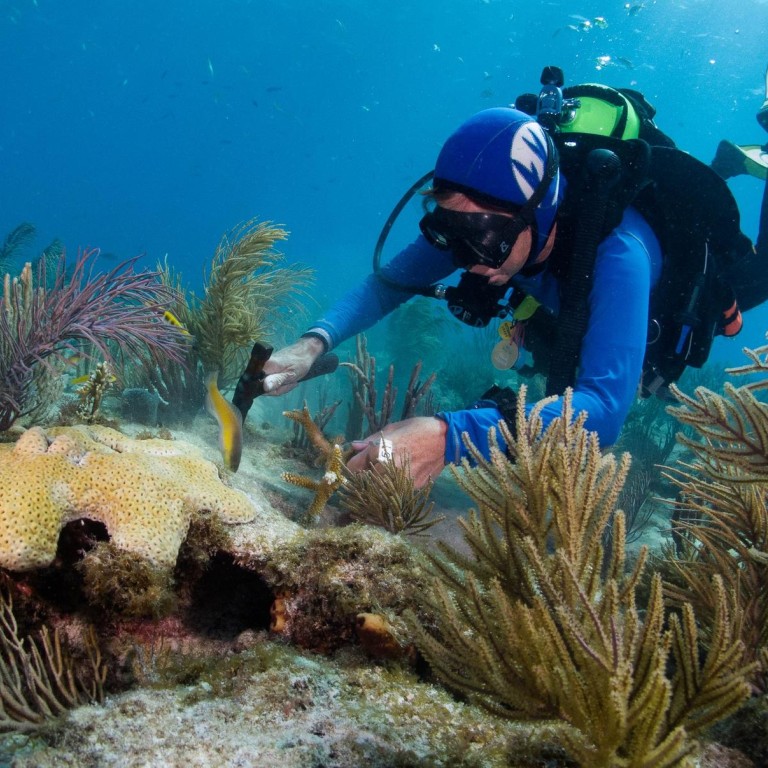
Coral gardening beckons ecotourists to restore reefs
Coral reefs are fragile and in danger worldwide, but a growing movement to restore them is based on the science of breaking off pieces in order to grow more, known as coral gardening.
Marine biologists cut off the tips of live branching corals, hang the pieces on man-made underwater trees where they grow, and later "outplant" them on real reefs on the ocean floor.
After years of trial and error, scientists in Florida are now bringing their methods to the public - via diving trips, ecotourism outings and summer camps for teens - to counter the harmful effects of climate change, pollution and industrial development.
"It is just like if you had a rosebush in your garden. As you prune that rosebush back, it grows back healthier, bushier, a little more lively," explains Stephanie Schopmeyer, senior research associate at the University of Miami Rosenstiel School of Marine Science, which runs a programme called Rescue a Reef that allows citizen scientists to join the project.
On a recent outing, Schopmeyer and about a dozen other divers and snorkellers spent a morning on the water, travelling first by boat to an underwater nursery in Biscayne Bay where they scrubbed algae off the man-made trees on which Staghorn corals hang, and later to another area where they planted nursery-grown bits of coral on an existing reef.
Certified scuba divers did the underwater work, while a handful of tourists and students helped make cookies - small discs on which they use epoxy to affix finger-sized pieces of coral. Then, the volunteers snorkelled, watching the divers nail their handiwork on the ocean floor.
Nicole Besemer, a graduate student at the University of Miami, says she was surprised to learn that corals can survive and thrive after being cut and nailed in a new place. "As a diver in south Florida, I want to make sure that my reefs are as healthy as they can be," Besemer says.
Corals may look like rocks or plants but they are actually animals in the same family as jellyfish and anemones. Each individual coral is called a polyp, and the reef grows as polyps grow copies of themselves. Most corals reproduce by releasing eggs and sperm into the water.
Coral reefs are important because they provide habitat and food for fish, turtles, seahorses, sea urchins and other creatures.
But the reefs are struggling, with their numbers down 50-95 per cent in some parts of the world. Pollution cuts off their light and food supply, overfishing removes the creatures that keep them clean and healthy, development and dredging cause sediment to smother them, and ocean acidification makes it harder for them to grow.
Storms can also kill them. Diego Lirman, an associate professor of marine biology and ecology at the University of Miami, did his dissertation some 30 years ago on the impact of hurricanes on a place nearby called Elkhorn Reef. Now, he says, there are no Elkhorn corals left there.
"It got to the point where I was getting tired of just watching things die and learning about them in the process. I wanted to be able to do something to recover them," says Lirman. He credits scientists in nations like Israel, Fiji, Indonesia and the Philippines for coming up with the coral gardening techniques that Florida researchers are now using.
